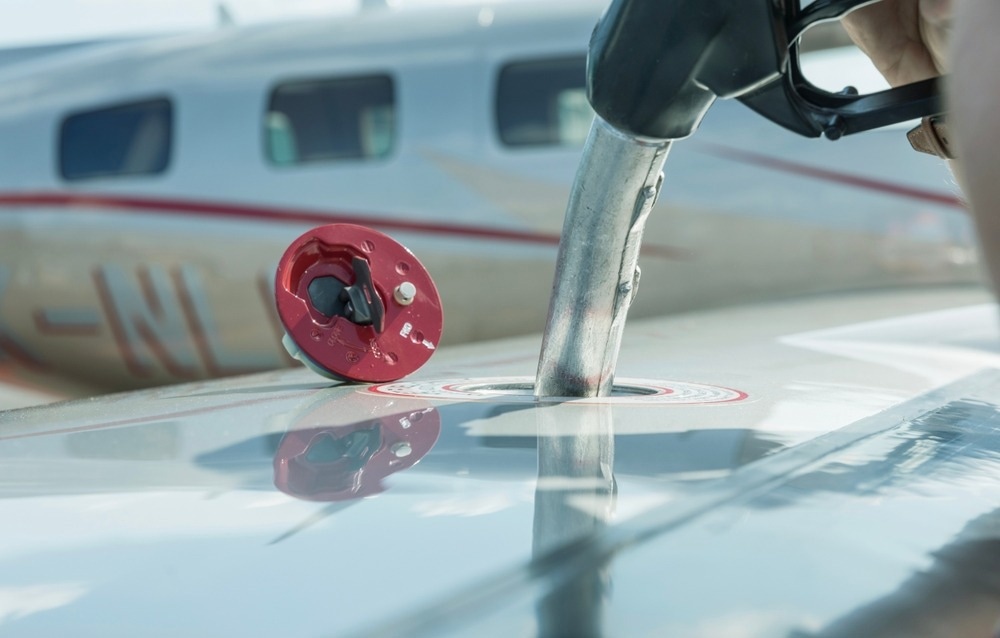Fuel level sensors allow vehicle operators to monitor fuel consumption and determine when to refill the tank. A fuel level sensor consists of two main components: the sensing system itself (also known as the sender) and the indicator (also commonly referred to as the gauge).
Fuel level sensors work by measuring the voltage across a variable resistor within the sensing system to determine the amount of fuel in the vehicle, which is then relayed to the driver or pilot via the indicating system.
Several components work within the sensing system, enabling it to detect how much fuel is in a tank, including the float switch, a variable resistor, and a wiper. The fuel level sensor system is relatively simple compared to other sensors currently produced, although newer fuel sensor systems utilize microprocessors.
The fuel level sensor is located in the fuel tank and consists of a foam float, an actuating metal rod, and a variable resistor. The variable resistor is usually composed of a resistive material, with one end attached to the tank. A small wiper moves over the resistive material as the float moves.
A voltage change is induced when the wiper moves across the wiper. This is caused by the float moving when the fuel level changes. Due to the wiper’s orientation, the highest resistance is experienced by the resistor when the tank is empty. The change in current is sent to an indicator, which changes the reading.
How Accurate Are Fuel Level Sensors?
Fuel level sensors in automobiles can often be inaccurate, especially when driving with a full tank. In this scenario, the float will rise to the top of the tank, with the wiper returning to the ground end of the resistor, resulting in a small resistance and a high current passing through the sensor.
As the fuel level drops, the sensor’s resistance changes, but the fuel level sensor gauge will often remain on ‘full’ for a period. This is due to the tank blocking the float, meaning the float cannot position itself correctly on the top of the fuel.
Another factor that limits the accuracy of a fuel level sensor when the tank is full or nearly full is the actuating rod’s reach. This causes the float to become submerged when the tank is full.
These factors cause inaccurate readings when the tank is full of fuel. When the fuel drops to a level where the float can sit on top, the resistance is allowed to change, leading to a more accurate reading.
Similarly, when the fuel level is low, the rod often does not extend to the end of the tank, causing the gauge to indicate an empty tank when, in fact, some fuel remains in the tank.

Image Credit: Nadezda Murmakova/Shutterstock.com
Aircraft Fuel Level Sensors
Some smaller aircraft use the same fuel level sensor mechanisms as automobiles. However, larger aircraft use more complex systems incorporating several sensors due to the increased size of the fuel tanks. Aircraft fuel sensors need to be much more accurate than automobiles.
This is due to the increased dangers associated with fuel loss in aircraft, which can have catastrophic consequences. Additionally, fuel level sensors in aircraft must be able to cope with changes in altitude. Therefore, sensor systems are much more sophisticated than their counterparts in the automotive industry.
Large commercial and military aircraft typically use fuel level sensor systems based on capacitance and ultrasound technologies.
In capacitance sensors, the fuel passes through special vents when it is consumed, causing a change in capacitance. In an ultrasonic fuel level sensor, ultrasonic signals are transmitted through the fuel to a sensor at the far end of the tank. Information on fuel levels is then passed to the pilots via the onboard computer.
A recently proposed novel fuel level sensor for use in aircraft is based on TIR point sensor arrays. This optical sensing technology is suitable for any type of common jet fuel and can work even with condensed water on the surface of the sensor.
In Summary
A fuel level sensor is an integral part of a vehicle, whether it is an automobile, commercial truck, or airplane. Current automobile fuel sensors do, however, suffer from a degree of inaccuracy, which is why these types of sensors are not used in large aircraft, which instead utilize more accurate capacitance or ultrasound sensors.
Research is ongoing into novel fuel level sensors for use in the aerospace and automotive industries to improve accuracy and reliability. The dangers of low fuel levels are well known in aircraft (and, in some scenarios, too much fuel), which makes research into more accurate systems crucial for the industry.
References and Further Reading
SMD Fluid Controls (website) How Fuel Gauges Work With Float Switches [online] fluidswitch.com. Available at: https://www.fluidswitch.com/2017/01/16/fuel-gauges-work-float-switches/
Onorato, G et al. (2017) Optical fiber fuel level sensor for aeronautical applications Sensors and Actuators A: Physical 260 pp. 1-9. [online] sciencedirect.com. Available at: https://www.sciencedirect.com/science/article/abs/pii/S0924424717302686
Nash, J.G (2023) How Does a Fuel Level Sensor Work? [online] itstillruns.com. Available at: https://itstillruns.com/fuel-level-sensor-work-12218364.html
Disclaimer: The views expressed here are those of the author expressed in their private capacity and do not necessarily represent the views of AZoM.com Limited T/A AZoNetwork the owner and operator of this website. This disclaimer forms part of the Terms and conditions of use of this website.